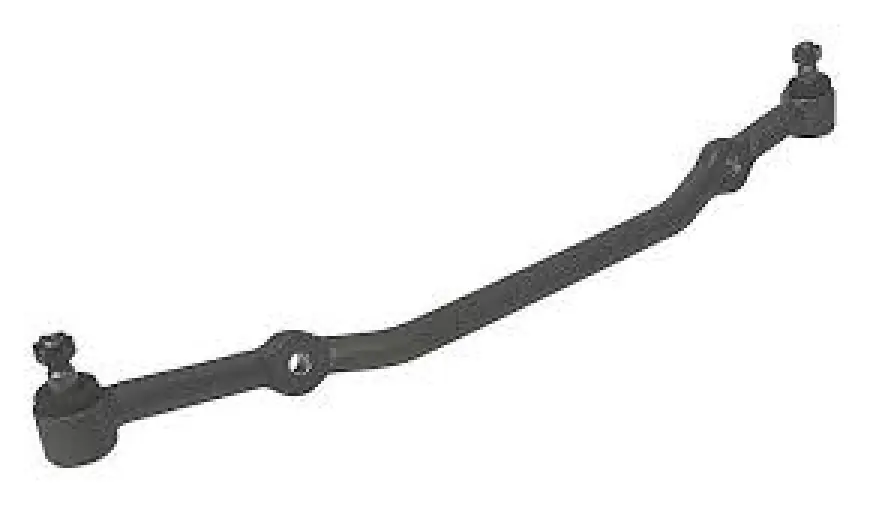Global Center and Drag Link Market 2030F Forecast and Dynamics
Technological integration is shaping the market landscape, with modern center and drag link systems being developed using lightweight alloys and corrosion-resistant materials that extend lifecycle and performance.

Introduction
The Global Center and Drag Link Market is entering a transformative phase, shaped by technological advancements, changing consumer expectations, and the evolving dynamics of the automotive industry. According to industry estimates, the market, valued at USD 1.21 billion in 2024, is projected to reach USD 1.67 billion by 2030, expanding at a CAGR of 5.50% during the forecast period.
This steady growth underscores the crucial role of steering components—particularly center and drag links—in ensuring vehicle safety, handling, and performance. Positioned at the core of vehicle steering systems, these components are indispensable for precise motion control, stability, and durability, especially in commercial vehicles such as trucks, buses, and heavy-duty fleets.
As the automotive sector undergoes rapid transformation with electrification, digitization, and sustainability goals, the center and drag link market is adapting with new designs, materials, and smart integrations. This article delves into the emerging trends, key drivers, challenges, competitive landscape, and future outlook of the industry, offering a comprehensive understanding of its growth trajectory.
Industry Key Highlights
- Market Value (2024): USD 1.21 Billion
- Forecast Value (2030): USD 1.67 Billion
- CAGR (2024-2030): 5.50%
- Growth Drivers: Rising vehicle production, demand for advanced steering systems, and lightweight material adoption
- Fastest Growing Segment: Passenger cars, driven by EV adoption and steering innovations
- Leading Region (2024): North America, supported by strong manufacturing and regulatory push
- Technology Shifts: Integration of Electric Power Steering (EPS), lightweight alloys, and corrosion-resistant coatings
- End-Use Industries: Passenger cars, commercial vehicles, off-road vehicles, logistics, and defense applications
Download Free Sample Report: https://www.techsciresearch.com/sample-report.aspx?cid=28897
Emerging Trends in the Center and Drag Link Market
1. Shift Towards Lightweight Materials
The global automotive industry is increasingly focused on vehicle weight reduction to improve fuel efficiency and meet stringent emission regulations. This has led to rising demand for aluminum, advanced steel alloys, and composite materials in steering components. Lightweight yet durable drag links are helping automakers balance efficiency with safety.
2. Rise of Electric Power Steering (EPS) Systems
The gradual shift from hydraulic to electric power steering (EPS) has created new opportunities. EPS not only reduces energy consumption but also integrates with advanced driver-assistance systems (ADAS). This trend is shaping demand for smarter, electronically compatible drag link designs that cater to modern vehicle architectures.
3. Growing Role of Coatings and Surface Treatments
Manufacturers are adopting heat-treated, anti-corrosive, and wear-resistant coatings to improve durability. These innovations extend the lifecycle of steering components, especially in heavy-duty commercial vehicles that face demanding operational environments.
4. Integration with Connected and Autonomous Vehicles
As autonomous and connected vehicle technologies advance, steering systems—including drag links—are being reimagined to support automated control, sensor integration, and redundancy mechanisms. This trend is expected to redefine product design standards by 2030.
5. Regional Manufacturing Expansion
Emerging economies in Asia-Pacific and Latin America are witnessing large-scale investments in automotive manufacturing. This creates opportunities for local production of center and drag links, reducing dependency on imports and strengthening regional supply chains.
Market Drivers
1. Rising Vehicle Production
With global automotive production increasing, demand for steering components is growing proportionally. Commercial vehicles, in particular, rely on durable drag links for load-bearing capacity and handling precision.
2. Demand for Advanced Steering Systems
The growing adoption of ADAS, autonomous features, and EPS requires sophisticated steering components. Center and drag links are evolving to meet higher performance benchmarks.
3. Expansion of Transportation and Logistics
The boom in e-commerce, urban logistics, and global trade has fueled production of commercial vehicles. This directly contributes to the rising need for durable steering solutions in trucks and delivery fleets.
4. Electrification of Vehicles
As EV adoption accelerates, automakers demand lightweight and energy-efficient steering components. Center and drag links tailored to EVs are becoming a new growth driver.
5. Regulatory Push for Safety and Emissions
Governments worldwide are imposing stringent safety and emission norms, pushing automakers to invest in advanced steering technologies that ensure reliability, safety, and compliance.
Segmentation Insights
The Global Center and Drag Link Market is segmented by:
- Material: Steel, Aluminum, Advanced Alloys
- Vehicle Type: Passenger Cars, Commercial Vehicles, Off-Road Vehicles
- Type: 1 to 1.5 inch, 1.5 to 1.75 inch, 1.75 to 2.75 inch
- Region: North America, Europe, Asia-Pacific, Middle East & Africa, South America
Passenger Cars – The Fastest Growing Segment
The passenger car segment is expected to dominate growth, driven by the rising popularity of fuel-efficient, lightweight vehicles and the rapid integration of electric power steering systems. With EV adoption accelerating, automakers are demanding lighter and more efficient steering components, making this the most dynamic category.
Regional Insights
- North America: Fastest-growing region, thanks to strong manufacturing base, advanced safety regulations, and EV adoption.
- Asia-Pacific: A hub for production expansion, supported by urbanization and government incentives for green mobility.
- Europe: Focused on innovation and compliance with strict emission/safety norms.
Competitive Analysis
The global center and drag link market is moderately consolidated, with key players focusing on innovation, material science, and strategic collaborations.
Major Companies Include:
- KOREA Central CO., LTD.
- Tenneco Inc.
- Moser Engineering
- Rane Holdings Limited
- ZF Friedrichshafen AG
- Powers & Sons Construction Company, Inc.
- WABCO Holdings Inc.
- Magna International Inc.
- Schaeffler AG
- Hendrickson USA, LLC
Competitive Strategies Observed:
- Product Innovation: Development of lightweight, corrosion-resistant steering components.
- Strategic Partnerships: Collaborations with automakers to co-develop EV-ready steering solutions.
- Regional Expansion: Setting up manufacturing hubs in Asia-Pacific and North America.
- Aftermarket Focus: Strengthening distribution channels to meet demand from vehicle maintenance and repair.
Future Outlook
The future of the center and drag link market is closely tied to the transformation of the automotive industry. By 2030, several defining factors will influence its trajectory:
- Electrification: Demand for EV-compatible steering components will rise significantly.
- Digitalization: Integration with smart and autonomous systems will drive innovation.
- Lightweighting: Continued material advancements will dominate product development.
- Regional Expansion: Asia-Pacific will emerge as a key hub for both demand and production.
- Sustainability: Eco-friendly manufacturing and recyclable materials will gain importance.
The market is expected to not only expand in size but also undergo a qualitative transformation, aligning with global megatrends in mobility, safety, and sustainability.
10 Benefits of the Research Report
- Provides comprehensive market size and forecast analysis (2020–2030).
- Highlights emerging industry trends and technological advancements.
- Identifies growth drivers and challenges shaping market dynamics.
- Offers segmentation insights by material, vehicle type, type, and region.
- Analyzes regional growth opportunities and future hotspots.
- Includes competitive analysis with profiles of leading market players.
- Assists decision-makers in strategic planning and investment choices.
- Covers EV and sustainability impacts on steering system demand.
- Tracks aftermarket opportunities and long-term industry shifts.
- Equips stakeholders with actionable insights for business growth.
Conclusion
The Global Center and Drag Link Market is steadily evolving as a cornerstone of automotive safety and performance. From its traditional role in commercial vehicles to its new applications in electric and autonomous vehicles, the market is diversifying and innovating. With technological advancements, regulatory support, and rising global vehicle demand, the industry is poised for sustained growth through 2030.
Manufacturers that embrace lightweight materials, EPS compatibility, and advanced coatings will likely lead the competitive race, while regions like North America and Asia-Pacific will remain pivotal growth engines. Ultimately, the next decade will see the center and drag link market not only grow in scale but also adapt to meet the challenges and opportunities of the future mobility landscape.
Contact Us-
Mr. Ken Mathews
708 Third Avenue,
Manhattan, NY,
New York – 10017
Tel: +1-646-360-1656
Email: [email protected]
Website: www.techsciresearch.com
What's Your Reaction?
 Like
0
Like
0
 Dislike
0
Dislike
0
 Love
0
Love
0
 Funny
0
Funny
0
 Angry
0
Angry
0
 Sad
0
Sad
0
 Wow
0
Wow
0



















































